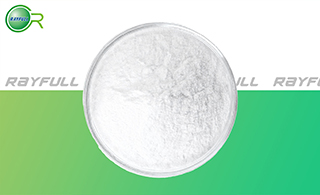METAMITRON
    ұҪаәІЭНӘ ұҪаәІЭНӘ
Introduction: A herbicide effective against grass and broad-leaved weeds in beet crops.
Common name: Metamitron
Another name: Goltix, Herbrak, Metamiton, Methiamitron, Metamitrone, etc.
Chemical name: 4-amino-4,5-dihydro-3-methyl-6-phenyl-1,2,4-triazin-5-one
Empirical formula: C10H10N4O
Structural formula:

Mol. Weight: 202.21 g/mol
CAS No.: 41394-05-2
Specifications
Leading Metamitron supplier
Metamitron 70% WDG
Metamitron 98% TC
Packing:
BULK PACKING
Solid: 25kg/Bag, 25kg/Drum, 50kg/Drum etc.
SMALL PACKING
Solid: 1kg/Alu bag, 500g/Alu bag, 200g/Alu bag, 100g/Alu bag, 50g/Alu bag, 15g/Alu bag etc.
Customerized packing label
Metamitron FAO standard
Professional registration
HAZARDS IDENTIFICATION
Hazard statement(s)
H302 (100%): Harmful if swallowed.
H400 (100%): Very toxic to aquatic life.
Precautionary statement(s)
P264: Wash ... thoroughly after handling.
P270: Do not eat, drink or smoke when using this product.
P273: Avoid release to the environment.
P301+P312: IF SWALLOWED: call a POISON CENTER/doctor/... IF you feel unwell.
P330: Rinse mouth.
P391: Collect spillage.
P501: Dispose of contents/container to ...
Supplemental Hazard Statements: none
MAMMALIAN TOXICOLOGY
Acute toxicity: 1) Acute oral LD50 for rat: 1183 a.i.mg/kg. 2) Acute dermal LD50 for rat: >5000 a.i.mg/kg. 3) Inhalation LC50 (4 h) for rat: 3.17 a.i.mg/L. 4) Non-Irritating to skin (rabbits). 5) Non-irritating to eyes (rabbits). 6) Not a skin sensitiser (guinea pigs).
No component of this product present at levels greater than or equal to 0.1% is identified as probable, possible or confirmed human carcinogen by IARC.
ADI: 0.03 mg/kg b.w./day [Dog, SF=100]
Classification:
Toxicity class WHO (a.i.): II (Moderately hazardous)
US EPA Classification (formulation): III (Caution - Slightly toxic)
EC Risk Classification: Xn - Harmful: R22; N - Dangerous for the environment: R50
ECOTOXICOLOGY
Effect on birds: moderate toxicity to birds, acute LD50 for Japanese quail is 1302 a.i.mg/kg. Effect on fish: low toxicity to fish, acute 96 hour LC50 for Bluegill sunfish is ЁR190 a.i.mg/L. Effect on aquatic invertebrates: moderate toxicity to aquatic invertebrates, acute 48 hour EC50 for Daphnia magna is 5.7 a.i.mg/L. Effect on algae: moderate toxicity to algae, acute 72 hour EC50 for Pseudokirchneriella subcapitata is 0.4 a.i.mg/L. Effect on honeybees: low-moderate toxicity to honeybees, contact acute 48 hour LD50 is >100 a.i.ҰМg/bee, oral acute 48 hour LD50 is >97.2 a.i.ҰМg/bee. Effect on earthworms: moderate toxicity to earthworms, acute 14 day LC50 for Eisenia foetida is 914 a.i.mg/kg.
ENVIRONMENTAL FATE
The substance is toxic to aquatic organisms. This substance does enter the environment under normal use. Great care, however, should be taken to avoid any additional release, for example through inappropriate disposal.
Usage: Herbicide developed by Bayer Leverkusen, patents: USP 3847914; Belg P 799854; BP 1368416. Selective, systemic, absorbed mainly by roots and translocated. Inhibits photosynthesis (photosystem II).
Application: Selective systemic herbicide, absorbed predominantly by the roots, but also by the leaves, with translocation acropetally. Used against grass and broad-leaved weeds in sugar and fodder beets. Applied pre-drilling incorporated, pre- and post-emergence (post-emergence as sequential treatment tank-mixed with oil or other herbicides). Metamitron Also used in mangold, red beet and certain strawberry varieties. Metamitron Rates 0.35-4.2 kg/ha for all crops. Phytotoxicity High selectivity in sugar and fodder beet.
| 






